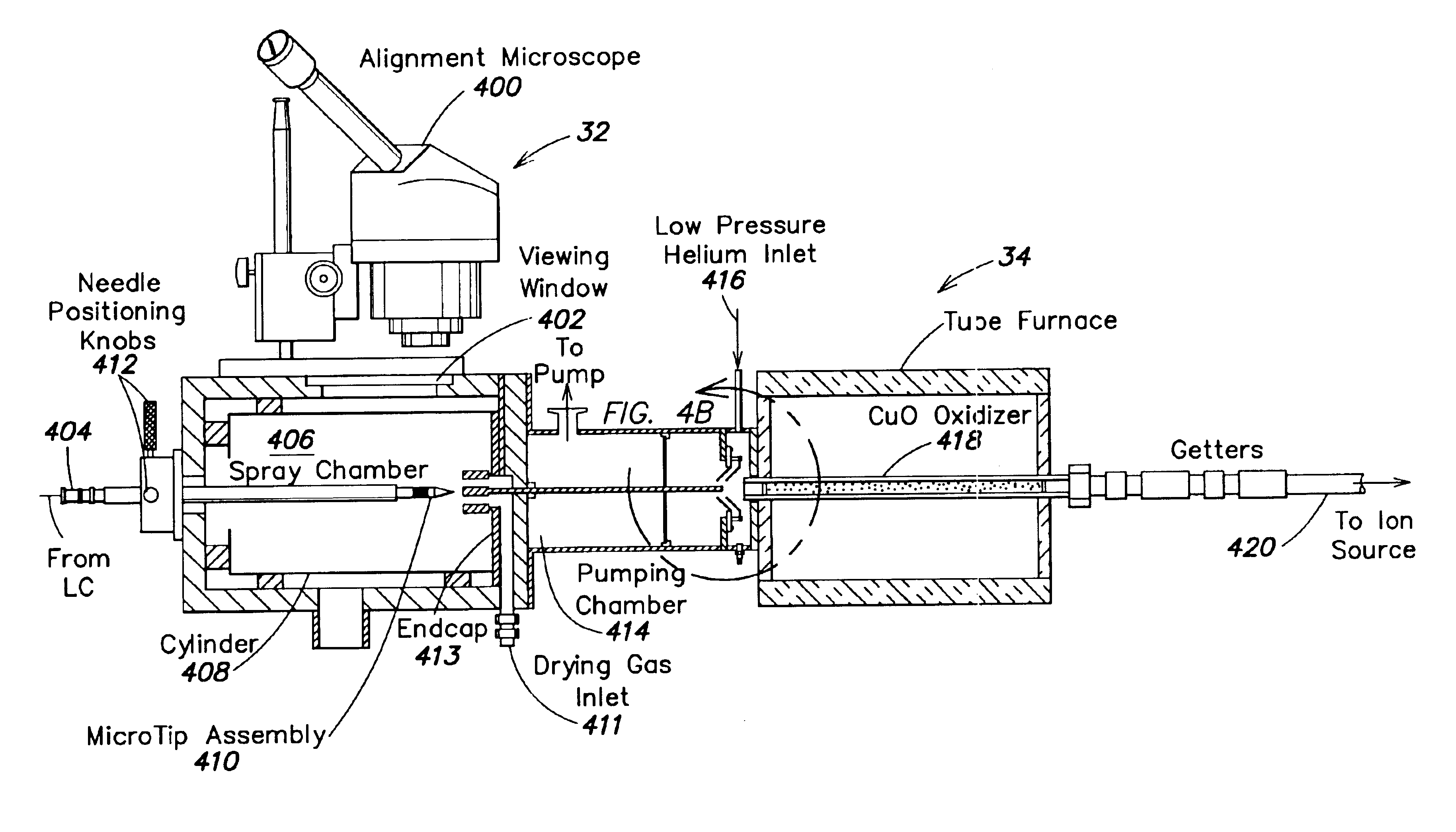Sample introduction interface for analytical processing
- Summary
- Abstract
- Description
- Claims
- Application Information
AI Technical Summary
Benefits of technology
Problems solved by technology
Method used
Image
Examples
fourth embodiment
[0033]FIGS. 7 and 8A-8D illustrate the present invention, coupling of laser-assisted desorption / ionization to a converter and then to the AMS;
fifth embodiment
[0034]FIGS. 9A-9B illustrates the invention, the laser-induced sample conversion method;
[0035]FIGS. 10A-10B illustrate the laser-induced sample conversion method for conversion of organic samples to CO2 for AMS analysis or other applications;
[0036]FIGS. 11A-11C illustrate an example of apparatus in which sample is moved past a fixed laser beam;
[0037]FIGS. 12A-12B illustrate the laser-induced sample conversion method for conversion of hydrogen-containing samples to H2 for AMS analysis or other applications;
[0038]FIGS. 13A-13B illustrate yet another embodiment for the conversion of sample in an AMS ion source; and
[0039]FIGS. 14A-14B illustrate sample conversion in the AMS ion source using a Cs ion beam; and
[0040]FIGS. 15 and 16 illustrate interfaces for continuous processing.
DETAILED DESCRIPTION OF THE INVENTION
[0041]FIG. 1 displays detection of an equimolar carbon standard with the AMS ion source. A mixture containing six compounds was injected into a GC-AMS interface, comprising a H...
second embodiment
[0075]An example of the invention is the conversion of carbon or hydrogen in complex samples into C− or H− in a cesium-sputter negative ion source, as illustrated in FIGS. 14A and 14B. Cesium sputter ion sources of this type are described in publications: Nucl. Instr. and Method B52:517 (1990); and Nucl. Instrum. Meth. Phys. Res. B92:445 (1994). Sample 1400 is applied to a surface of a substrate 1402 that is then moved through a focused Cs ion beam 1404 within the ion source chamber. In contrast to the conventional practice of converting the sample to solid graphite prior to introduction into the ion source chamber, the present invention introduces the sample in its native form, either as a solid or a liquid, in accordance with the techniques described above. That is, the step of dispensing sample onto the substrate is performed outside of the ion source chamber, and the substrate 1402 is then introduced into the ion source chamber and translated relative to the Cs beam 1404. This s...
PUM
 Login to View More
Login to View More Abstract
Description
Claims
Application Information
 Login to View More
Login to View More - R&D
- Intellectual Property
- Life Sciences
- Materials
- Tech Scout
- Unparalleled Data Quality
- Higher Quality Content
- 60% Fewer Hallucinations
Browse by: Latest US Patents, China's latest patents, Technical Efficacy Thesaurus, Application Domain, Technology Topic, Popular Technical Reports.
© 2025 PatSnap. All rights reserved.Legal|Privacy policy|Modern Slavery Act Transparency Statement|Sitemap|About US| Contact US: help@patsnap.com



